Baltimore Area

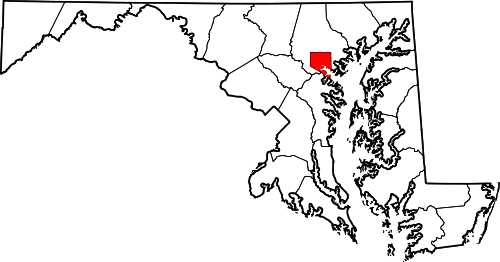
If you are moving to Baltimore, Maryland, you are in for a treat. Baltimore is unlike any other city. It has history, a waterfront, great football and baseball, and many distinct areas to suit a variety of living preferences.
Helpful Baltimore Articles:
- Looking To Rent a Home In The Baltimore Metro Area? 9 Things You Need To Know
- Buying a Home in the Baltimore Area? Go Local!
- 5 Favorite Baltimore Area Neighborhoods
- Moving to Baltimore? 10 Insider Tips You Need To Know
Baltimore is made up of many neighborhoods, each with its own sense of place. If you have specific neighborhoods in mind, you can explore them below.
Canton Area
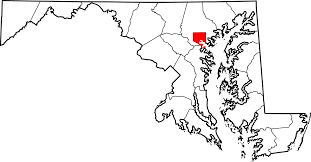
Canton is a neighborhood in Baltimore, Maryland, along the outer harbor in the city's southeastern section. It is about two miles east of downtown Baltimore and not far from Patterson Park, Fells Point, Highlandtown, and Greektown. Canton is centered around O'Donnell Square, a park bordered on the north and south by O'Donnell Street. O'Donnell Square has several bars and restaurants, a coffee shop, an art gallery, other businesses and residences, and a former fire station.
New developments have recently added other focus areas to the neighborhood, including the Canton Waterfront Park and Maryland Korean War Memorial, the rehabilitated American Can Company building, and two marinas.
Most houses in Canton are early-1900s, two and three-story rowhomes on narrow streets. Homes located closer to the water can date back to the years of the Civil War. Newer townhouses have been built on empty lots throughout the neighborhood, and rehabilitated industrial buildings near the water have been turned into apartments and condos.
Catonsville Area
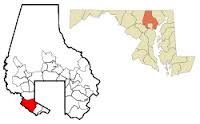
Catonsville is located in Baltimore County, Maryland. The population was 39,820 at the 2000 census. Catonsville is bordered by Woodlawn to the north, by the City of Baltimore to the east, by Elkridge to the south, and by Ellicott City to its west.
Catonsville is the home of University of Maryland, Baltimore County (UMBC), a public research university with over 12,000 students.
In 2002, the Maryland legislature issued a proclamation declaring Catonsville to be "Music City, Maryland" due to a concentration of musical retail stores, venues and educational facilities in the area.
In 2007 Money magazine ranked Catonsville the 49th best place to live in the USA, third best in Maryland and Virginia. Catonsville's rich history engenders its continued small business growth and local pride.
Federal Hill Area
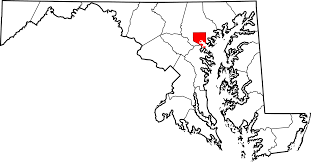
Federal Hill is a neighborhood in Baltimore, Maryland, just south of the city's central business district. It is named after the prominent hill easily viewed from the Inner Harbor area. The lush green hillside serves as a community park for residents and visitors.
The neighborhood occupies the northwestern part of a peninsula extending along two branches of the Patapsco River. Generally referred to as the "South Baltimore Peninsula", it includes the neighborhoods of Federal Hill, Locust Point, Riverside, South Baltimore, and Sharp-Leadenhall.
The Cross Street Market, a recently-renovated historic marketplace built in the 19th century, continues to serve Federal Hill residents and is the primary social and commercial hub for the neighborhood. It is a popular destination for tavern goers and music lovers, with street festivals several times a year.
Federal Hill is served by Federal Hill Elementary School, Francis Scott Key Elementary and Middle School, and Digital Harbor High School. The public library is the Light Street Branch of the famous Enoch Pratt Free Library.
Federal Hill is located conveniently to Interstate 95, Interstate 395, the Baltimore-Washington Parkway, and Charles and Light Streets, which provide the major north-south surface route through Baltimore.
Guilford Area Information
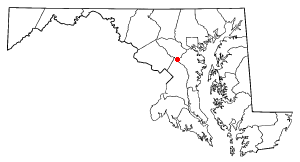
Guilford is a distinctive neighborhood located in the northern part of Baltimore, Maryland. It is bounded roughly by Coldspring Lane on the north, York Road/Greenmount Ave. Avenue on the east, convergence of St. Paul Street and Greenway Street at University Parkway on the south, and Charles Street on the west. It is a residential neighborhood with 680 single family dwellings ranging from modest houses to stately mansions, many with swimming pools, extensive landscaping, street trees and old-fashioned streetlights. Architectural oversight is maintained by the Guilford Association, Inc., to which the residents pay dues. The neighborhood also supports a private security force. and maintains liaisons with surrounding communities, umbrella organizations and the city. There are nearby shopping and services including the Johns Hopkins University, Union Memorial Hospital, the Rotunda Shopping Center and the Charles Village Shopping Center.
The residents of Guilford also own and maintain the renowned Sherwood Gardens, a six-and-a-quarter-acre park between Highfield, Stratford, Greenway and Underwood. Its spectacular display of tulips brings thousands of Marylanders to the park each April and May. Annual neighborhood events include Moveable Feast, Easter parade, wine tasting, Christmas tree lighting, and family activities.
Homeland Area Information
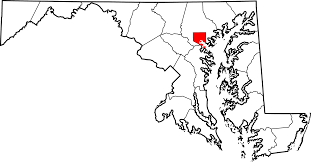
Homeland is a neighborhood located in the northern part of Baltimore, Maryland. It is bounded roughly by Melrose Avenue on the north, Bellona Avenue on the east, Homeland Avenue on the south, and Charles Street on the west.
Homeland is a neighborhood rich in architecture and landscape design. A variety of building styles gives the neighborhood its special aesthetic appeal. Every home, from the most grand to the more modest, demonstrates the qualities that have made Homeland an enduring neighborhood for over seventy-five years.
Homeland has an abundance of common areas that add interest to the landscape of the community and provide large and small open spaces that are shared by all residents. These common spaces add value, both tangible and intangible, to the properties within the neighborhood.
Inner Harbor Area Information
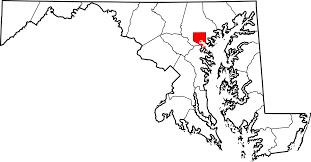
The Inner Harbor is a historic seaport, tourist attraction, and iconic landmark of the City of Baltimore, Maryland. The harbor itself is actually the end of the Northwest Branch of the Patapsco River and includes any water west of a line drawn between the National Aquarium in Baltimore and the Rusty Scupper restaurant. The term "Inner Harbor" is used not just for the water but for the surrounding area of the city, with approximate street boundaries of President Street, Lombard Street, Light Street, and Key Highway. The harbor is within walking distance of Oriole Park at Camden Yards and M&T Bank Stadium and has a water taxi that connects the Inner Harbor to Fells Point, Canton, and Fort McHenry.
Among the many museums around the Inner Harbor, you can visit the American Visionary Art Museum, the Baltimore Museum of Industry, Geppi's Entertainment Museum , the Jewish Museum of Maryland, the Civil War Museum and Port Discovery Children's Museum.
Sports lovers can visit Oriole Park at Camden Yards (home of the Baltimore Orioles), M&T Bank Stadium (home of the Baltimore Ravens), Sports Legends at Camden Yards, and the Babe Ruth birthplace and museum.
In addition, there’s the National Aquarium, Maryland Science Center, World Trade Center Baltimore, The Power Plant (featuring ESPN Zone and Hard Rock Café), 1st Mariner Arena, the Baltimore Maritime Museum, and USS Constellation, and the list goes on and on. There’s something for everyone at the Inner Harbor!
Johns Hopkins Hospital Area Information
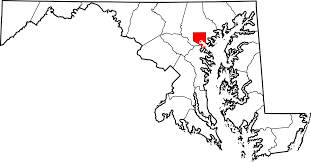
The Johns Hopkins Hospital is the teaching hospital and biomedical research facility of Johns Hopkins University School of Medicine, located in Baltimore, Maryland. It was founded using money from a bequest by philanthropist Johns Hopkins. It is the birthplace of many medical specialties including neurosurgery, urology, endocrinology, pediatrics, cardiac surgery and child psychiatry. It is widely regarded as one of the best hospital in the United States. It has been ranked by U.S. News and World Report as the best hospital in America for 18 consecutive years. The hospital's main medical campus in East Baltimore is served by the easternmost station on the Baltimore Metro Subway.
In 2008, The Johns Hopkins Hospital was ranked as the top overall hospital in the United States for the 18th consecutive year by U.S. News & World Report.
The Russell H. Morgan Department of Radiology and Radiological Science at Johns Hopkins ranked as the top Radiology department within a hospital in the United Stated by Medical Imaging Magazine (most recent ranking in 2007).
Johns Hopkins University Area Information
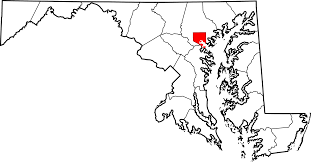
Johns Hopkins University, commonly referred to as Hopkins or JHU, is a private research university located in Baltimore, Maryland. Johns Hopkins also maintains full-time campuses elsewhere in Maryland, Washington, D.C., Italy, China and Singapore. It is one of fourteen founding members of the Association of American Universities.
The university is named after Johns Hopkins, who left $7 million in his 1873 will for the foundation of the university and Johns Hopkins Hospital. At the time, this was the largest philanthropic bequest in U.S. history, the equivalent of over $131 million in the year 2006. The university opened on February 22, 1876, with the stated goal of "The encouragement of research…and the advancement of individual scholars, who by their excellence will advance the sciences they pursue, and the society where they dwell."
Johns Hopkins was the first U.S. university to teach through seminars, instead of solely through lectures, as well as the first university in the United States to offer an undergraduate major (as opposed to a purely liberal arts curriculum). As such, Johns Hopkins was a model for most large research universities in the United States, particularly the University of Chicago. According to the National Science Foundation (NSF) ranking, Johns Hopkins performed $1.55 billion in science, medical and engineering research in fiscal year 2007. NSF ranked the university #1 among U.S. academic institutions in total Research and Development spending for the 29th year in a row.
Mount Washington Area Information

Mount Washington is an area of northwest Baltimore, Maryland. Historically, Mt. Washington was a small area. However, residents and businesses of many other nearby neighborhoods in the 21209 zip code where the neighborhood is located refer to their location as Mt. Washington. Though mostly within the Baltimore city limits, but mixed with some of these areas within Baltimore County as Pikesville.
The actual Mt. Washington is mostly residential, though it has two small commercial areas:
- Mount Washington Village, located off the west side of the Jones Falls Expressway near the Kelly Avenue bridge, containing several restaurants and stores, as well as the Baltimore Light Rail's Mount Washington Station.
- Mount Washington Mill, a refurbished textile mill now housing a Whole Foods, Starbucks, and other stores and offices, located off the east side of the Jones Falls Expressway near the Kelly Avenue bridge, commonly referred to as Historic Mount Washington.
These two areas were at one time viewed as a single area, but since the construction of Interstate 83, these areas have been separated, and travel over a longer distance is required between them.
Mt. Washington is well known for its public transportation operated by the Maryland Transit Administration. This, most notably, includes the Central Light Rail line. It has one stop located in historic Mt. Washington Village, and another that is closer to the Mt. Washington Mill at the nearby Robert E. Lee park, known as the Falls Road stop. Light Rail service operates to downtown Baltimore, Hunt Valley, and BWI Airport every 10-15 minutes at most times.
The zoned local public schools are Mount Washington Elementary, Roland Park Middle, and Northwestern High School, although most of the children in the community who pursue their education in the Baltimore City public school system do so at either of the magnet schools, City or Poly.
Patterson Park Area Information
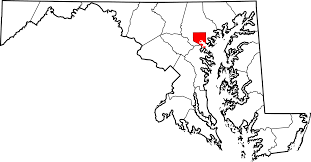
Patterson Park is a public park in Baltimore, Maryland. The park is bordered by East Baltimore Street on the north, Eastern Avenue on the south, South Patterson Park Avenue on the west, and South Linwood Avenue on the east. The Patterson Park extension lies to the east of the main park, and is bordered by East Pratt Street on the north, South Ellwood Avenue on the east, and Eastern Avenue on the south.
Bikers, runners, joggers, and everyone else can take advantage of the park's admirably smooth pathways. The star attractions are the boat lake (in which you can fish, if you have a license, though this is rarely enforced), the marble fountain, the General Casimir Pulaski Monument, and the Pagoda, also known as the Patterson Park observatory, which has a great view of the city and is considered to be a very nice building aesthetically. The sports fields are open for use to anyone who wants to play a game, and there are public tennis courts as well. Two playgrounds are also in the park, and there is a swimming pool open during the summer, and a skating rink during winter. During the summer and early autumn, several festivals are hosted at the park. A wide variety of people use the park. The area surrounding the park is part of an innovative urban renewal campaign by the city and neighborhood leaders.
There are no heavily forested areas of Patterson Park; however, there are plenty of open spaces. Bird watchers will still have a good time, though, as there are plenty of birds in the park. The boat lake, recently reconstructed, is inhabited mostly by mallard ducks, but also is visited by other birds, including American coots and wood ducks. There are also fish, frogs, and turtles in the lake. If you are lucky, you may see a Great Blue Heron or Great Egret fishing around.
Roland Park Area Information
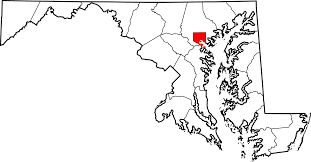
Roland Park is the first planned "suburban" community in North America, located in Baltimore, Maryland. It was developed between 1890 and 1920 as an upper-class streetcar suburb. The early phases of the neighborhood were designed by Edward Bouton and Frederick Law Olmsted, Jr. The neighborhood is home to several elite private schools such as Friends School of Baltimore, Gilman School, Roland Park Country School, the Bryn Mawr School, and Boys' Latin School of Maryland (collectively known as the Roland Park Five to locals).
St. Mary's Seminary and University is currently located in Roland Park. The Baltimore Light Rail's Cold Spring Lane station is within walking distance of much of the neighborhood, just across the Jones Falls Expressway to the west.
University of Maryland Medical Center Area Information
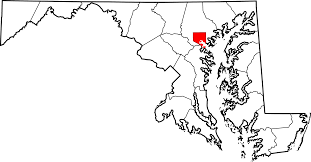
The University of Maryland Medical Center (UMMC) is a teaching hospital with 705 beds based in Baltimore, Maryland, that provides the full range of health care to people throughout Maryland and the Mid-Atlantic region. It gets more than 35,000 inpatient admissions and 165,000 outpatient visits each year. UMMC has approximately 6,500 employees as well as 1,000 attending physicians, and provides training for about half of Maryland's physicians and other health care professionals. All members of the medical staff are on the faculty of the University of Maryland School of Medicine.
The University of Maryland Medical Center was named one of the nation's best acute-care hospitals in patient safety and quality of care in 2006 and 2007 by the Leapfrog Group. It is part of the University of Maryland Medical System, a private, not-for-profit health system that includes nine acute care, specialty and rehabilitation hospitals as well as outpatient facilities throughout Maryland.
The University of Maryland Medical Center is one of the nation’s oldest teaching hospitals. It was created in 1823 as the Baltimore Infirmary, which was located on the same site as today’s medical center, on the West side of downtown Baltimore.

